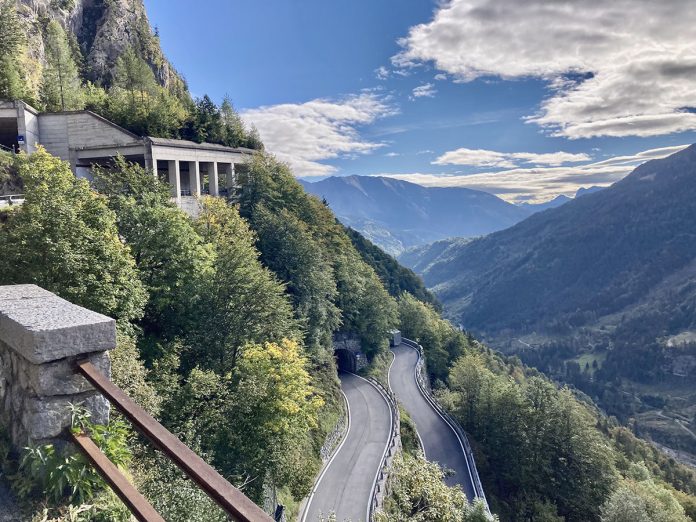by InTrieste
Officials from Friuli Venezia Giulia and Austria’s Carinthia have concluded a joint feasibility study examining options to improve the Monte Croce Carnico Pass, a key mountain crossing that serves local communities and businesses in the region.
The study was conducted by a bilateral working group set up by Carinthia’s Vice Governor Martin Gruber and Friuli Venezia Giulia’s Regional Councillor for Infrastructure Cristina Amirante. Its findings were presented this week in Tolmezzo, with both officials attending the final session.
The group analyzed four options: a base tunnel, a summit tunnel, an alternative surface route, and maintaining the existing road. The evaluation considered technical feasibility, safety, and cost. Experts identified the alternative surface route as the most balanced solution, while noting that a summit tunnel would also meet safety and technical requirements, though at a significantly higher cost.
The base tunnel and keeping the existing road were deemed less viable—either financially or from a safety perspective.
Potential EU funding was also explored. Delegates from both regions traveled to Brussels to discuss the project with EU officials and representatives of the European Investment Bank (EIB). However, the working group confirmed that Monte Croce Carnico is not part of the EU’s Trans-European Transport Network (TEN-T), making it ineligible for direct EU support.
“Based on the data presented, we have decided to exclude the base tunnel from further consideration,” Gruber and Amirante said after the meeting.
The summit tunnel, with an estimated cost of €531 million and a four-year construction timeline, will only be pursued if the Italian and Austrian national governments agree to co-finance it.
“Neither Friuli Venezia Giulia nor Carinthia could carry this financial burden alone,” the officials said. “While technically feasible, the risk for our regions would be too high.”
The alternative surface route, projected at €150 million, also requires national-level funding. Italy’s Anas, responsible for the SS52bis road, was asked to prepare documentation for further discussions with national authorities.
Councillor Amirante reiterated that Friuli Venezia Giulia favors the summit tunnel, calling it “the safest and most sustainable solution,” allowing year-round, 24-hour access for local residents and businesses.
Officials agreed to establish a permanent technical working group, including representatives from both regions and Anas, to coordinate the next planning stages.
Gruber and Amirante thanked the study group and all involved institutions for their work. “We now have a clear evaluation framework for the next steps,” they said. “Carinthia and Friuli Venezia Giulia will continue to act and decide jointly on this issue.”
The shared goal is to provide modern, safe infrastructure for the communities and economy of the region, without creating a new transit corridor.
































